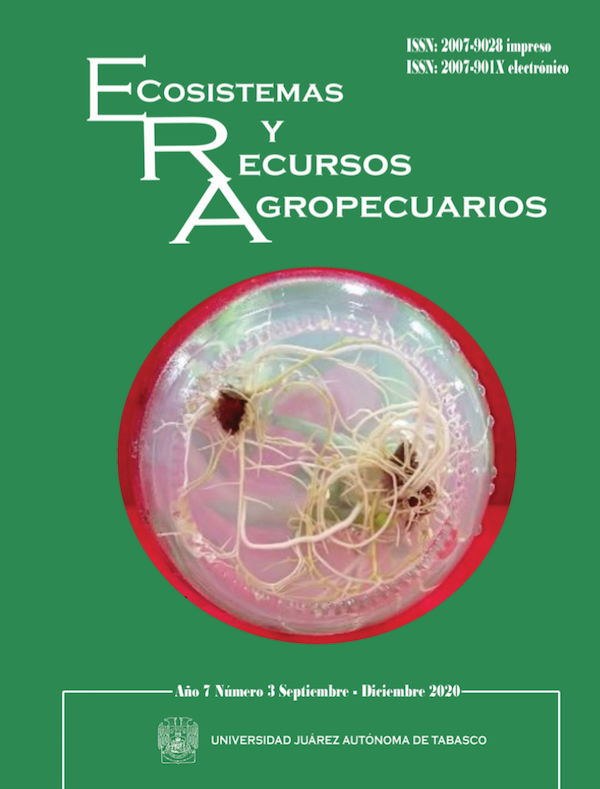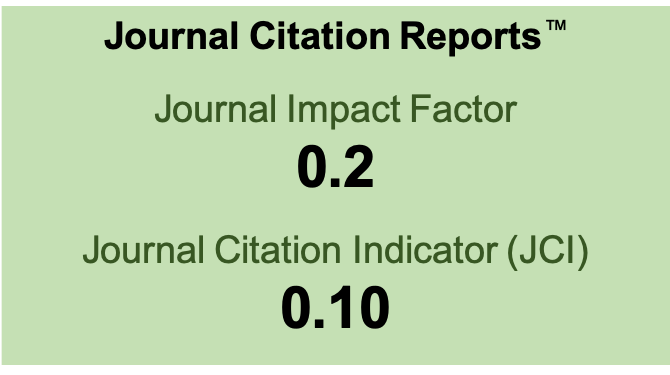Propolis of Apis mellifera from Yucatán, México: Study of biological properties
DOI:
https://doi.org/10.19136/era.a7n3.2604Keywords:
Antidiabetic, antioxidant, bioactive compounds, phenol, flavonoids.Abstract
Apis mellifera propolis has been used in ethnobotany and its compounds and therapeutic properties have been evaluated in various studies. Propolis from Maxcanú, Tizimín and Huhí, Yucatán, México were analyzed, determining the bioactive compounds (BC) of ethanolic extracts (PEE) and their potential use in the control of blood pressure, diabetes, and their antioxidant capacity. PEE was prepared by mixing 6 g of propolis with 20 mL of 95% ethanol, stirring daily for 28 days. BC were identified using HPLC and in vitro assays were performed on their antioxidant activity, ACE-I inhibition, and antidiabetic properties. Total phenols and flavonoids were between 1.27 ± 0.02 and 25.95 ± 0.99 mg GAE g−1 and 65.06 ± 3.48 and 85.64 ± 4.09 mg CE g−1 dry extract. The results of the in vitro assays were positive and a close relationship with the total content of flavonoids was detected, with epicatechin and p-coumaric being the main components identified. According to the results, the Huhí PEE had the highest values in all the assays, as well as the BC content. This study demonstrates that PEE can be used as a potential alternative in the treatment of certain diseases due to the therapeutic properties that exhibits.
Downloads
References
Ahn MR, Kumazawa SA, Usui YA, Nakamura J, Matzuca MB, Zhu FC (2007) Antioxidant activity and constituents of propolis collected in various areas of China. Food Chemistry 101: 1383-1392.
Alencar SM, Oldoni TLC, Castro ML (2007) Chemical composition and biological activity of a new type of Brazilian propolis: red propolis. Journal of Ethnopharmacology, 113: 278–283.
Brat P, Georgé S, Bellamy A, Du L, Chaffaut A, Scalbert L, Arnult L, Amiot MJ (2006) Daily polyphenol intake in France from fruits and vegetables. Journal of Nutrition 136: 1-6.
Cavalaro RI, Gonçalves R, Sebastien D, Nóbrega JM, Ferreira de Souza TM (2019) In vitro an In vivo antioxidant properties bioactive compounds from green propolis obtaided by ultrasound-assisted extraction. Food Chemistry X(4): 1-8.
Dineshkumar B, Mitra A, Manjunatha M (2010) A comparative study of alpha amylase inhibitory activities of common antidiabetic plants at Kharagpur 1 block. International Journal of Green Pharmacy 115-121.
Granados-Pineda J, Uribe-Uribe N, García-López P, Ramos-Godínez MO, Rivero-Cruz F, Pérez-Rojas JM (2018) Effect of pinocembrin isolated from Mexican brown propolis on diabetic nephropathy. Molecules 23: 1-19.
Hayakari M, Kondo Y, Izumi H (1978) A rapid and simple spectrophotometric assay of angiotensin-converting enzyme. Analytical Biochemistry 84: 361-369.
Kasiotis MK, Anastasiadou P, Papadopoulus A, Machera K (2017) Revisiting Greek Propolis: Chromatographic Analysis and Antioxidant Activity Study PLoS ONE 12: e0170077. Incluir el doi del artículo
Krentz A, Bailey C (2005) Oral anti-diabetic agents: current role in type 2 diabetes mellitus. Drugs 65: 385–411.
Lee SE, Hwan HJ, Ha JS, Jeong HS, Kim JH (2003) Screening of medicinal plant extracts for antioxidant activity. Life Science 73: 167-179.
Li A, Xuan H, Sun A, Liu R, Cui J (2016) Preparative separation of polyphenols from water-soluble fraction of Chinese propolis using macroporous absorptive resin coupled with preparative high-performance liquid chromatography. Journal of Chromatography B: Analytical Technologies in the Biomedical Life Science 1012: 42-49.
Li L, Xiao-Bin P, Bai-Nian C, Gao L, Wang L, Shou-Bao L (2013) Pinocembrin inhibits angiotensin II-induced vasoconstriction via suppression of the increase of [Ca2+]i and ERK1/2 activation through blocking AT1R in the rat aorta. Biochemical and Biophysical Research Co 45: 69-75.
Morais MC, Luqman S, Kondratyuk TP, Petronio MS, Regasini LO, Silva DH, Bolsani VS, Soares CP, Pezzuto JM (2010) Suppression of TNF-alpha induced NF-kappaB activity by gallic acid and its semi-synthetic esters: Possible role in cancer chemoprevention. Natural Product. Research 20: 1−8.
Phaniendra A, Jestadi DB, Periyasamy L (2015) Free Radicals: properties, sources, targets, and their implication in various diseases. Indian Journal of Clinical Biochemistry 30: 11–26
Przybyłek I, Karpinski T (2019) Antibacterial properties of propolis. Molecules 24:1-17.
Pukalskas A, Van Beek T, Venskutonis R, Linssen J, Van Veldhuizen A, Groot A (2002) Identification of radical scavengers in sweet grass (Hierochloeodorata). Journal of Agricultural and Food Chemistry 50: 2914-2919.
Ramnath S and Venkataramegowda S (2017). Anti-inflammatory and anti-diabetic activity of indian propolis. European Journal of Pharmaceutical and Medical Research 4: 311-316.
Rohman A, Riyanto S, Yuniarti N, Saputra WR, Utami R, Mulatsih W (2010). Antioxidant activity, total phenolic and total flavonoid of extracts and fractions of red fruit (Pandanus conoideus Lam). International Food Research 17: 97-106.
Salah NM, Souleman AM, Haker SK, Hawary SE, Shahid SA, El-Hardy FK (2017) Acetylcholinesterase, Alpha-Glucosidase and Tyrosinase Inhibitors. International Journal of Pharmacy and Phytochemical Research 9: 528-536.
Salatino A, Fernandes-Silva CC, Righi AA, Salatino ML (2011) Propolis research and the chemistry of plant products. Natural Product Reports 28: 925–936
Shimada K, Fujikawa K, Yahara K, Nakamura T (1992) Antioxidative properties of xanthone on the auto oxidation of soybean in cylcodextrin emulsion. Journal of Agricultural Food and Chemistry 40: 945-948.
Valero da Silva M, Gomes de Moura N, Barreto A, Moraes V (2020) A review of the potential therapeutic and cosmetic use of propolis in topical formulations. Journal of Applied Pharmaceutical Science 10(1): 131-141.
Yahia EM, Gutiérrez-Orozco F, Arvizu de León C (2011) Phytochemical and antioxidant characterization of mamey (Pouteria sapota Jacq. H.E. Moore & Stearn) fruit. Food Research International 44: 2175–2181.
Yen GC, Chen HY (1995) Antioxidant activity of various tea extracts in relation to their antimutagenicity. Journal of Agricultural and Food Chemistry 43: 27-32.
Zhang C, Huang S, Wei W, Ping S, Shen X, Li Y, Fu-liang H (2014) Development of High-Performance Liquid Chromatographic for Quality and Authenticity Control of Chinese Propolis. Journal of Food Science 79: C1315–C1322.
Downloads
Published
Issue
Section
License
Aviso de copyright
Los autores que se envían a esta revista aceptan los siguientes términos:
una. Los autores conservan los derechos de autor y garantizan a la revista el derecho a ser la primera publicación del trabajo con una licencia de atribución de Creative Commons que permite a otros compartir el trabajo con un reconocimiento de la autoría del trabajo y la publicación inicial en esta revista.
B. Los autores pueden establecer acuerdos complementarios separados para la distribución no exclusiva de la versión del trabajo publicado en la revista (por ejemplo, en un repositorio institucional o publicarlo en un libro), con un reconocimiento de su publicación inicial en esta revista.
C. Se permite y se anima a los autores a difundir su trabajo electrónicamente (por ejemplo, en repositorios institucionales o en su propio sitio web) antes y durante el proceso de envío, ya que puede conducir a intercambios productivos, así como a una cita más temprana y más extensa del trabajo publicado. (Consulte El efecto del acceso abierto).



